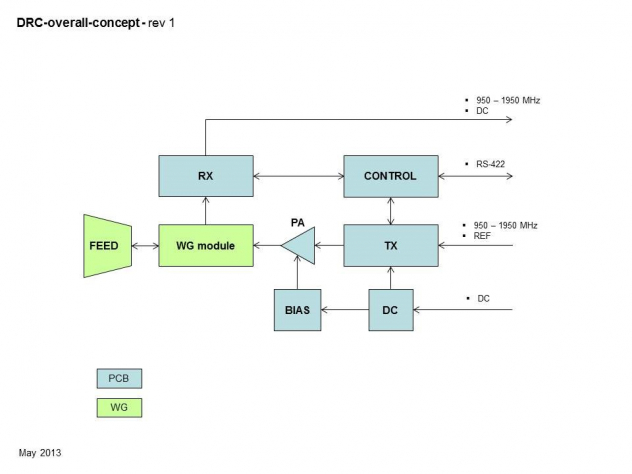-
StatusCompleted
-
Status date2015-11-02
-
Activity Code7A.024
The key objective of this project is to develop a fully integrated, flexible VSAT outdoor transceiver platform for use in next generation deployable Ka-band terminals having a range of distinct applications.
The transceiver will address the upcoming need for a high-performance, affordable unit that exploits the operational features of the latest High Throughput Satellites (HTS) – specifically i) spot-beam architectures and ii) mixed commercial / non-commercial Ka payloads.

The project addresses the need to provide a flexible RF package suitable for use by different market sectors and a range of different satellite networks. In addition to the technical challenges difficulties in delivering this product, a key challenge is to do so at market-leading price points.
The transceiver includes BUC, PLL LNB, waveguide network and M&C, all housed in a compact, IP-rated enclosure with modem-ready IF interface and different M&C options.
The base product provides over 5 Watt at P1dB of RF power with a future upgrade path to 10 Watt.
A particular innovation is that the new product has the ability to electronically switch polarisation and frequency band to provide simple, seamless operation for users who require the ability to operate in different locations and with different satellites networks using common terminal hardware. This includes Comms-on-the-move (COTM) and Comms-on-the-pause (COTP) applications.
The Mercury transceiver is a single-box solution that includes the M&C, BUC, LNB, waveguide network (including T/R filtering), waveguide polarizer and antenna feed.
The Mercury is a flexible platform for wideband Ka-VSAT XCVRs with switchable polarization and switchable bands.
It has a circular-to-linear waveguide polarizer, dual TX-RX diplexers and high performance transmit reject filters.
SYSTEM ARCHITECTURE
The overall transceiver concept is depicted below:

The XCVR is designed in a modular way consisting of :
- WG module with polarizer and TX-RX diplexers
- RX module
- TX module
- PA module
- Control module
- DC module
Interfacing with the system modem takes place via two coaxial IF/IFL connections and a RS-422 serial bus.
The phase-combined Power Amplifiers are capable of delivering well over 5 Watt of modulated carrier power between 29 - 31 GHz over all conditions to the antenna feed.
- Engineering samples – Q4 2013
- Pilot production units – Q3 2014
- Full production units – Q1 2015


